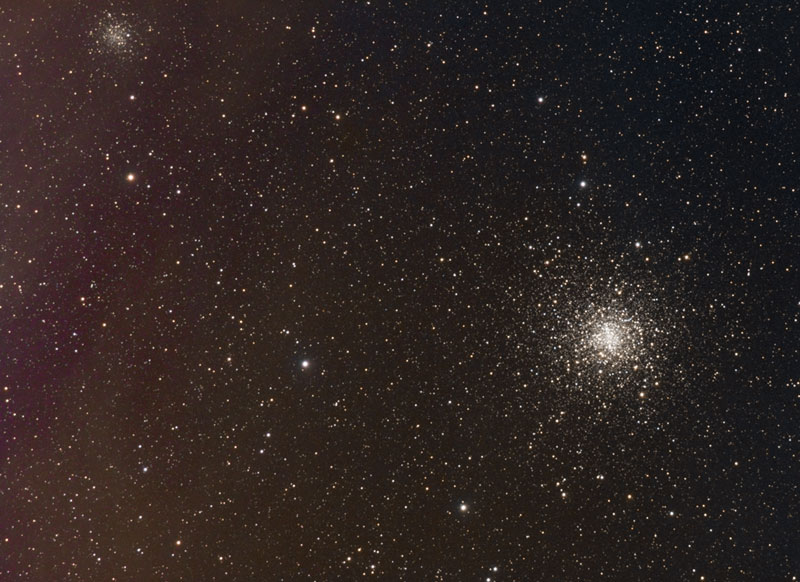
M4 and NGC 6144 (Jon Talbot)
In a rare pairing of two globular clusters, M4 and NGC 6144 are separated by 1°. To observe this pair of globulars, the observer should try to frame the eyepiece image to exclude the glaringly bright Antares. By doing this, NGC 6144 is more readily identified.
M4 was discovered byJean-Philippe Loy de Chéseauxin 1745 and catalogued by Messier in 1764. It was the first globular cluster in which individual stars were resolved. M4 is a Class IX globular cluster and is described as a large loose globular cluster is only 1.3° west of the bright 1st-magnitude red star Antares in Scorpius. At a distance of only 7,000 light-years, it is considered the nearest of all globular clusters and is easily resolved by a 4” telescope.
Observations of M4 have yielded 43 variable stars, and Hubble Space Telescope photographs and data have shown the presence of some of the oldest white dwarf stars , at an approximate age of 13 billion years, known in the Milky Way. One white dwarf star has been identified as a binary with a pulsar as a companion, and a super Jupiter-sized planet that is 2.5x the size of our solar system’s largest planet.
Discovered by William Herschel on May 22, 1784, NGC 6144 is located between M4 and Antares. NGC 6144 is a class XI globular cluster and is visually a smaller 9th-magnitude globular. NGC 6144 lies 33,000 light years distant and is over three times farther away than M4. At that distance it also appears through the telescope eyepiece as over three times smaller; a mere 6.2′ in diameter.
Using a 102 mm f/7 apochromat refractor with a medium magnification wide field eyepiece, M4 and NGC 6144 were easily observed under dark moonless conditions.